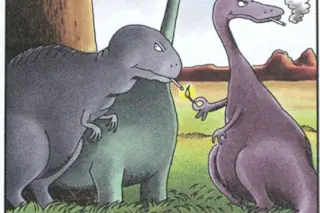Gary Larson's classic Far Side panel proposes one theory of dino-doom, which so far lacks supporting evidence. New research is, however, shedding light on an alternate idea about what caused the End-Cretaceous extinction. To paraphrase Rob Base and DJ EZ Rock, it takes two to make a thing go horribly, awfully wrong. And so it was with the tag team of terror — asteroid impact and volcanism — that ended the Age of Dinosaurs some 66 million years ago. But new research suggests that prevailing theories may have gotten the story wrong. To recap: the fossil record tells us that 66 million years ago, dinosaurs were living large and in charge. Recent research suggests the diversity of species had been in decline for some time by then, but it's still fair to say the closing days of the Cretaceous period were dino-mite. Mammals were also spreading across the planet and ...
The 1-2 Punch of the End-Cretaceous Extinction
New research challenges the Chicxulub impact theory, suggesting the Deccan Traps volcanic event may have driven the End-Cretaceous extinction.
More on Discover
Stay Curious
SubscribeTo The Magazine
Save up to 40% off the cover price when you subscribe to Discover magazine.
Subscribe













